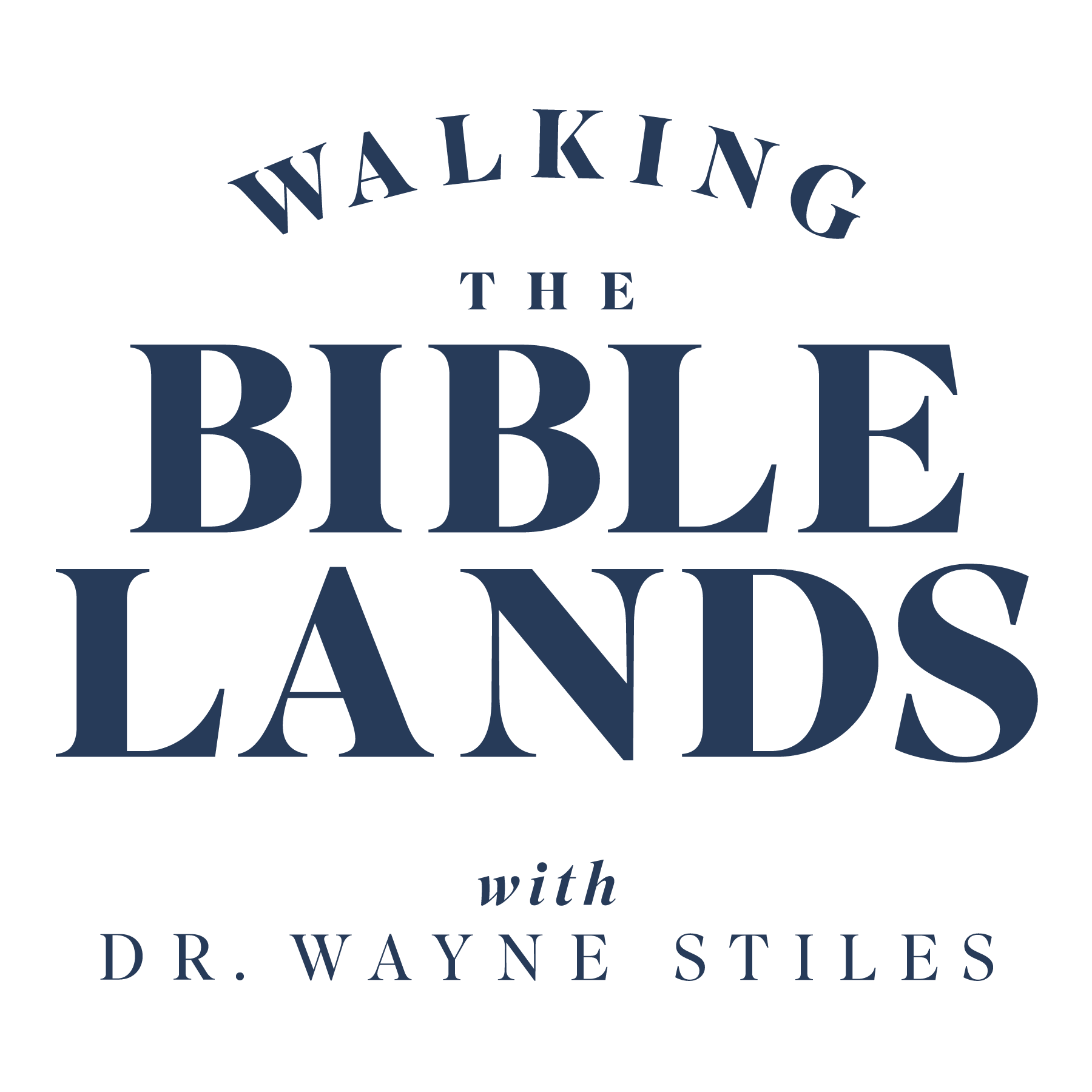3 min read
Who Were the Canaanites? How To Apply Those Odd Names And Places
2 Lessons From People That Don't Seem To Matter (But Do)
Admin
:
Aug 23, 2022 12:27:00 PM

All my life as I’ve studied the Bible and heard it taught, reading the odd list of Canaanite names feels like driving over potholes. I think, Why doesn’t somebody fill in those holes? Who were the Canaanites, and why should I care about them this week?
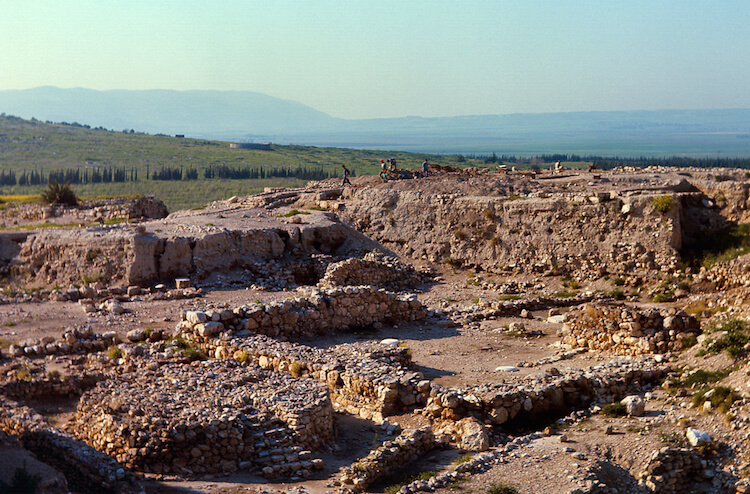
(Photo: Megiddo’s Canaanite temple and sacrificial altar. Courtesy of the Pictorial Library of Bible Lands)
In fact, most of the time when I hear preachers read the list of “Canaanites, Hittites, and Jebusites,” they typically add “Termites” to the list just to get a laugh. We chuckle because—if we’re honest — including those Canaanite names seems a bit ridiculous—and irrelevant.
What difference do all those “—ites” make to us? In this post, I’ll give a simple overview of these names, who they were, and where they lived.
But more importantly, I’ll share what difference they make to us today.
Who Were the Canaanites? Seven Nations Greater Than You
Just before the Hebrews entered the land God promised to Abraham, Isaac, and Jacob, Moses said:
When the LORD your God brings you into the land where you are entering to possess it, and clears away many nations before you, the Hittites and the Girgashites and the Amorites and the Canaanites and the Perizzites and the Hivites and the Jebusites, seven nations greater and stronger than you . . . —Deuteronomy 7:1
Who were the Canaanites in the Bible? These seven nations represent people groups in different locations:
- Canaanites
- Hittites
- Girgashites
- Hivites
- Amorites
- Perizzites
- Jebusites
1. Canaanites
Canaan was Noah’s grandson through the line of Ham. His direct lineage included the “[Hittites] and the Jebusite and the Amorite and the Girgashite” (Gen. 10:15–16).
As a result, “Canaanites” often serves as the general term for the inhabitants of the land—the indigenous people of Canaan (Gen. 12:6; Num. 21:3; Judg. 1:10).
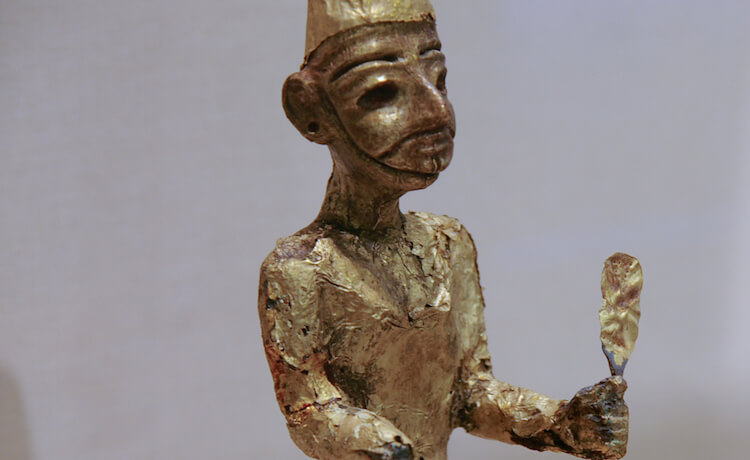
(Photo: Canaanite god El, found at Megiddo. Courtesy of the Pictorial Library of Bible Lands)
2. Hittites
Migrating from Anatolia (modern Turkey), the Hittites settled in the hill country around Hebron. Abraham bought the Cave of Machpelah from Ephron the Hittite (Gen. 23:10).
One of the most well-known Hittites was Uriah, the husband of Bathsheba and one of King David’s mighty men (2 Sam. 11:3).
3. & 4. Girgashites and Hivites
We know precious little about these people groups, other than they lived near the area of Mount Hermon and the Lebanon mountains (Josh. 11:3; Judges 3:3).
5. Amorites
The Amorites came to Canaan from Aram (Syria) and took over much of the hill country. As a result, their name appears numerous times in the Bible in interaction with the Hebrews (Deut. 3:11; Josh. 10:10; 11:8; 1 Sam. 7:14).
The discovery of the Armana Letters— 15th-century cuneiform clay tablets discovered in Egypt—has offered scholars insight into the Amorite language (among many other things). These clay tablets also give geographical confirmation of many place names in the land of Israel. (See map below.)
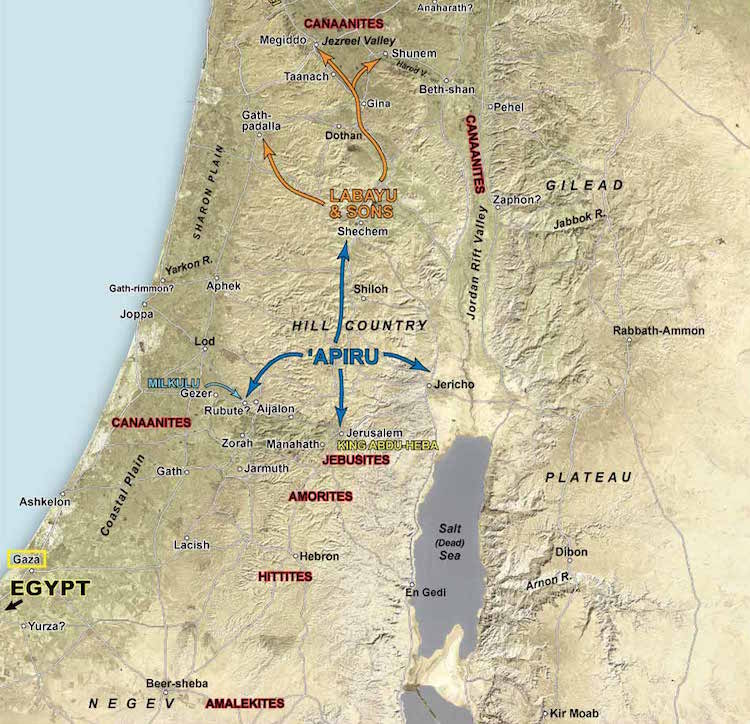
(Map of Canaanite locations, courtesy of Satellite Bible Atlas)
6. Perizzites
Although little is known about this group, the Perizzites are listed along as a people the Hebrews were to drive out of the land (Gen. 15:20; Ex. 3:8, 17; 23:23; 33:2; 34:11). However some of them lingered in the land, and Solomon reduced them to servitude (1 Kings 9:20).
Easton’s Bible Dictionary refers to the Perizzites as “dwellers in the open country, the Canaanitish nation inhabiting the fertile regions south and south-west of [Mount] Carmel. ‘They were the graziers, farmers, and peasants of the time.’”
7. Jebusites
The Jebusites inhabited Jebus, or ancient Salem—what we know today as the part of Jerusalem called the City of David.
- They were considered a group of the Amorites (Josh. 10:5).
- The Jebusites persisted living in Jebus until David conquered the city 400 years after Joshua—and made it his capital in 1004 B.C. (2 Sam. 5:6-10).
- David purchased the threshing floor of Araunah the Jebusite, a site that became the Temple Mount (2 Samuel 24:16-24).
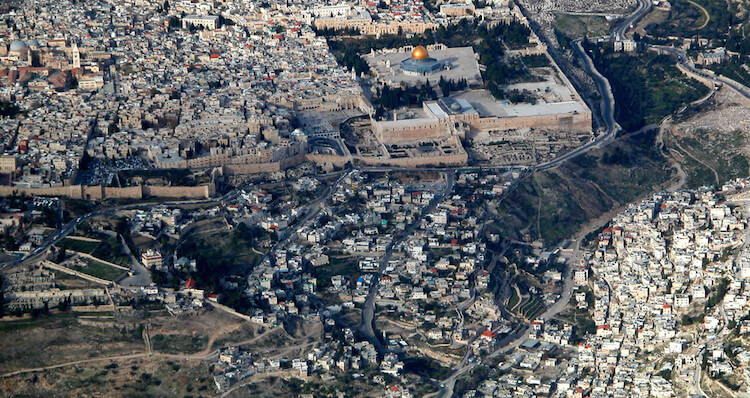
(Photo: Temple Mount with the City of David just south of it. Courtesy of the Pictorial Library of Bible Lands)
2 Lessons from the Seven Nations
There are a couple of things we can learn from these nations:
1. God’s mercy and patience toward the unrepentant is long but not eternal.
2. God often leads His people to victory over impossible odds.
1. God’s Mercy and Patience Toward the Unrepentant
The Lord’s command for Joshua to destroy and drive out these seven nations has drawn fire as cruel and out of character for a God of love. But this isn’t true.
- The Canaanites knew of God’s power. If any Canaanite repented and turned to God—they were not destroyed. Rahab is an example (Josh. 2:8-13; Heb. 11:31).
- God told Abraham one of the reasons God waited 400 years to redeem the Hebrews from slavery in Egypt and return them to Canaan stemmed from God’s mercy to the Canaanites. The Lord gave the Canaanites time to repent of their sins.
In the fourth generation they will return here, for the iniquity of the Amorite is not yet complete. —Genesis 15:16
Is God tapping your shoulder? God’s mercy and patience are long—but not eternal. His delay stems from His kindness meant to lead you to repentance (Rom. 2:4).
2. God Often Leads His People to Victory
Moses said these seven nations were “greater and stronger” than God’s people (Deut. 7:1). This reminds us that God’s people will only succeed with God’s help.
From that perspective, the list of all those Canaanite names simply represented a list of victories God would perform.
Your struggles are also a list of God’s potential victories in your life.
Dive Deeper Into Scripture
Join us for a year-long interactive study of the New Testament & Proverbs that includes maps, photographs, and virtual tour videos that helps bring context and meaning to Scripture.
Tell me what you think: What Canaanites are you facing today? To leave a comment, just click here.
Click here to leave a comment.
-1.png?width=5230&height=1198&name=unnamed%20(4)-1.png)


.jpg?width=350&name=Wayne-books-350wide%20(1).jpg)



